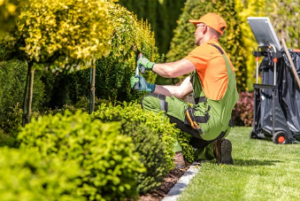No matter your gardening expertise or inexperience level, minor garden upkeep is necessary to keep your space looking its best. For example, some gardens only need regular lawn cutting and weeding, while others necessitate more detailed attention.
Whatever your minor garden maintenance requirements, ensure you’re familiar with the plants in your garden and when they require sunlight. Furthermore, stay abreast of any weather changes that might impact them.
Weeding
 Weeding is taking out unwanted plants or vegetation from your garden. It’s an essential part of minor garden upkeep that can be done manually or with special tools.
Weeding is taking out unwanted plants or vegetation from your garden. It’s an essential part of minor garden upkeep that can be done manually or with special tools.
Weeds not only look unsightly, but they can also compete with your garden plants for water, sunlight and nutrients. Furthermore, weeds may harbour pests and diseases which could harm your plants.
Furthermore, some weeds, such as bees and birds, can be hazardous to wildlife. Therefore, you should regularly weed your garden to maintain its health.
Though weeding may be one of the more tedious garden tasks, it is essential for gardening success. Not only does weeding improve the aesthetic of your yard, but it also makes it simpler to care for and keep clean.
When weeding, getting rid of the entire root system is essential. Doing this will prevent new weeds from taking over your garden. Additionally, weeding after rain makes pulling up the roots of unwanted plants easier.
Different weeding methods exist, and some of them are more efficient than others. Some of the more popular methods include mowing, hoeing and spraying.
Mowing your lawn before weeding will help clear soil and eliminate unwanted plant material, saving time and effort. Furthermore, it reduces the damage done to your lawn during weeding operations.
If you can’t eliminate all weeds from your garden, use mulches or other materials as barriers to keep them contained. It will also protect the soil from further weed growth.
Early spring is the ideal time to begin weeding, as annual and perennial weeds typically emerge after dormancy during the winter. It also serves as an excellent opportunity to pull up perennial weeds that sprout during warm weather after being dormant during wintertime.
Another minor garden maintenance way to reduce weeds is not planting certain kinds of seeds, like dandelion. These plants can be challenging to manage and could quickly take over your garden if left unchecked.
Pruning
Pruning, trimming and other minor garden maintenance activities keep your plants healthy. They can make all the difference between a scraggly-looking unmanaged plant that looks unattractive and one that has been well-kept with lush greenery and vibrant health.
Pruning is selectively removing parts of a plant (branches, buds, roots) to shape its growth for aesthetic or landscape purposes. It can be either formative (developmental) pruning that shapes and layout the plant’s structure; or maintenance pruning that helps keep plants healthy and robust.
No matter the type of pruning, timing is critical. Pruning at an inappropriate time can produce undesirable outcomes and possibly lead to disease issues or damage.
Fruit trees, for instance, should be pruned in late winter or early spring when they are dormant. Doing this allows the tree to recover from any climate changes and prepare for harvest season after season.
Heading cuts are the most common type of pruning, involving cutting back the tops of individual branches to control their size and promote fruit production. Thinning is another popular form of pruning which consists in taking out entire limbs to eliminate overgrown or diseased branches.
Many plants, such as roses, can benefit from a thinning-out cut that removes an entire shoot or limb at its source. When done correctly, this pruning encourages regrowth and revitalises a plant.
A thinning-out cut is commonly used to rejuvenate shrubs by eliminating over-mature, weak or problematic growths that reduce light availability for photosynthesis. It may also be employed to reshape and retrain shrubs with multiple branches.
Generally, avoid pruning between late summer and early winter unless you are trying to address disease problems or damage. Doing so could result in tender new growth that won’t survive the winter.
Younger plants, such as those in a flower bed or container, require little pruning for a healthy appearance and structure. However, as the wider and older varieties mature, pruning becomes increasingly necessary to maintain their desired form and function.